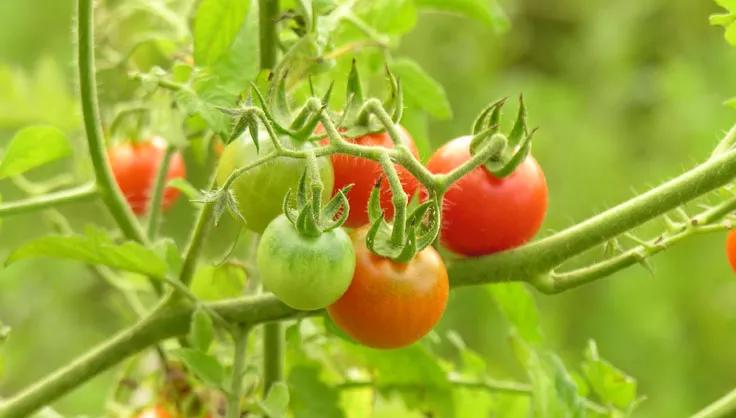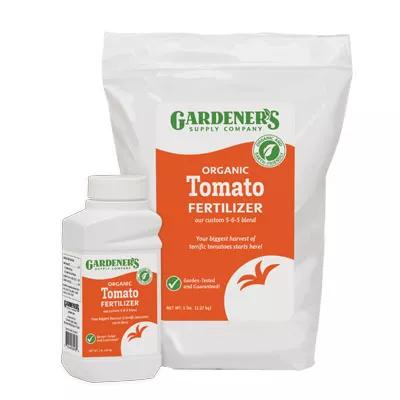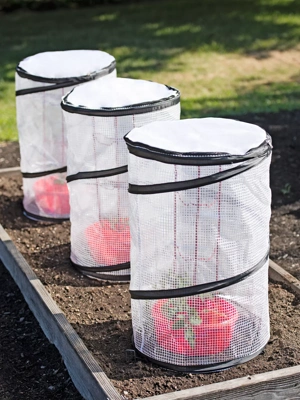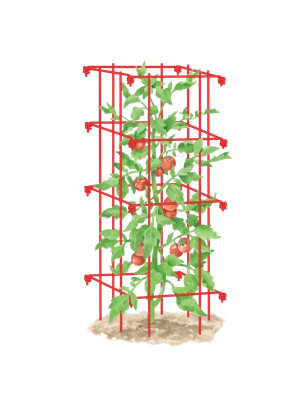9 Easy Tips to Boost Tomato Production in Your Garden
Get the most out of your garden — and the most tomatoes ever!

Sure, garden-fresh tomatoes are good, but you know what’s even better? More garden-fresh tomatoes! So when you find yourself jonesing for more juicy fruits, try these simple ways to encourage more productive plants without too much fuss. Follow these nine easy tips to help increase the number of tomatoes on your plant.
1. Choose the Right Variety
When it comes to growing tomatoes, not all varieties are created equal. Some are more prolific than others. So, while it may seem obvious, the easiest way to get higher yields is to, well, choose high yielding varieties. Duh. Look for varieties such as ‘Celebrity’, ‘Early Girl’, or ‘Roma’. These varieties are reliable producers and can give you a bountiful harvest throughout the growing season.
2. Plant Them Deep
To get your main stem off to a sturdy start, pinch off the bottom few sets of leaves on your tomato plant and bury the bottom two-thirds of the plant under the soil. Once buried, the root nodes where you pinched off those lower leaves will develop into full-sized roots. This method leads to a stronger root system, a sturdier main stem, and a more vigorous plant.
3. Provide Plenty of Sunlight
Tomatoes are sun lovers, and they thrive in full sunlight. Again, obvious but crucial: if you want that bumper crop, make sure your tomato plants receive at least 6-8 hours of direct sunlight each day. A great way to “control” how much sun your plants get is to grow your tomatoes in containers that you can move around to catch the sun.
4. But Not Too Much Sunlight
If you live someplace where many hours of sunlight isn’t a problem, you may also live someplace where too much sunlight is a problem. When the temps climb to extremes and that late afternoon sun blazes its way across your yard, it can scald or burn both the fruits and the leaves of your tomato plants, so having shade cloth on hand is super helpful.
5. Keep the Soil Moist but Not Waterlogged
Tomatoes need consistent moisture to produce fruit, but they don't like soggy soil. Water your plants regularly, aiming to keep the soil evenly moist. Mulching around the base of the plants helps retain moisture and prevent weeds, but be careful not to let the mulch touch the stems directly.
6. Feed Your Plants Regularly
Just like us, tomatoes need food to grow and thrive. Feed your plants with a balanced fertilizer every 2-3 weeks throughout the growing season. You can use a commercial fertilizer or opt for organic options like compost or compost tea. Remember, over-fertilizing can lead to excessive foliage growth at the expense of fruit, so follow the instructions on the fertilizer package.
7. The Right Support is Super Important
Whether you use stakes, cages, or trellises, make sure to support your plants and keep them off the ground, which can reduce the risk of diseases and pests. Supports mean better airflow, more access to fruit-boosting sunlight, and easier harvests. Choosing the right support depends on your space limitations and whether you’re growing determinate or indeterminate tomatoes, but especially if you’re trying for a bumper crop, you definitely want to make sure that the support you choose is strong enough to hold your dozens of perfect, ripe tomatoes and tall enough to support the final height of your plant.
8. Flick the Flowers
Yes, it sounds weird, but the logic is sound: the more flowers that are pollinated, the more tomatoes you’ll end up with. Since tomato flowers are self-pollinating, they just need a little help to get the pollen from the stamen onto the pistil. Just a little flick will do! (Or several throughout your garden tending, just to be safe.) Take a lesson from one of the main and most effective pollinators of tomato flowers, the bumblebee. The gentle and persistent vibrations of their bumble-bodies perfectly shake that pollen where it needs to be. So, let your fingertips channel that same buzzy energy! Some gardeners go a step further and use electric toothbrushes to really bring that bumblebee vibe.
9. Use Your Pruners Prudently
In many cases, we think nature knows best, but when left to their own devices, tomatoes can get truly unruly and exerting a little bit of control with your pruners can go a long way toward a healthier plant and a larger harvest. Remove suckers — those small shoots that sprout in the crotch between the main stem and branches — to redirect the plant’s energy towards fruit production. You can also prune any leaves or stems that begin growing close to the ground, to get ahead of any harmful diseases.
We can’t guarantee you a bumper crop if you follow these tips, but they sure give you a much better chance of growing a historic harvest! And when your garden is overflowing with opulent orbs and you’re simply rolling in red, ripe tomatoes, we hope you’ll remember ol’ Gardener’s Supply!
Last updated: 04/24/2024
Print this Article:
Related items
Get the Dirt
Stay up to date on new articles and advice. Please fill out the information below.

 Oasis Self-Watering Tomato Planter With Trellis
Oasis Self-Watering Tomato Planter With Trellis







